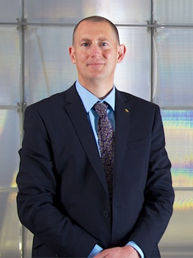 At the Australian Synchrotron, reliability is a crucial part of the service we provide to researchers and is an important shared value that has been reinforced since the commencement of operations by ANSTO. I’m proud to report that our users and staff are currently (pun intended) enjoying the facility’s longest-ever continuous period without unscheduled loss of the electron beam that powers the x-rays and infrared light our users need for their experiments. As of 21 August 2014, we had achieved more than 700 hours without a beam ‘dump’, some 50 hours above the previous record set in 2012. It’s a great testament to the quality of our equipment and the efforts of our hardworking staff.
At the Australian Synchrotron, reliability is a crucial part of the service we provide to researchers and is an important shared value that has been reinforced since the commencement of operations by ANSTO. I’m proud to report that our users and staff are currently (pun intended) enjoying the facility’s longest-ever continuous period without unscheduled loss of the electron beam that powers the x-rays and infrared light our users need for their experiments. As of 21 August 2014, we had achieved more than 700 hours without a beam ‘dump’, some 50 hours above the previous record set in 2012. It’s a great testament to the quality of our equipment and the efforts of our hardworking staff.
Reliability is a key to productivity. For users, our reliability underpins an impressive total of more than 1,500 research papers published in peer-reviewed journals since our official opening in July 2007, and more than 700 new protein structures deposited in the international Protein Data Bank.
The Synchrotron has in fact enabled Australian and New Zealand scientists to triple the number of protein structures reported each year: up from 133 in 2007 to 407 in 2013. Almost two-thirds of the 407 structures reported in 2013 were discovered through the Synchrotron, advancing our knowledge of disease, immunity and the processes that underpin life in general, as well as enhancing the skills of the biomedical research community. The large-scale elucidation of protein structures is essential for the development of new drugs, diagnostic tests and other medical treatments. Without these protein structures, the international pharmaceutical and medical diagnostics industry would be working in the dark.
While the numbers are impressive, the excellent research outcomes from the Australian Synchrotron are also well documented. Publications in the world’s leading journals are one indicator and, increasingly, we are also seeing practical impacts. For instance, clinical trials are now being undertaken in Australia where previously, after the discovery phase, developments would have proceeded overseas. Without the Synchrotron, researchers in this field would not be able to achieve their world-class skills in Australia. Without the Synchrotron, researchers would take far longer to screen potential drug compounds, and new drugs would still be a far-off dream – or the intellectual property of an overseas research group.
Industrial research is another area where excellence drives practical outcomes that are valuable to the nation. Prior to 2012, around six per cent of all experiments conducted here had some form of industry involvement, typically through research providers such as university or research institutes such as ANSTO, CSIRO and medical research institutes.
Following the establishment of a dedicated industry support team and efforts to penetrate the service crystallography market, industry engagement has more than doubled to around 14 per cent of all experiments. This impressive growth has come from direct industry interactions driven, to a large extent, by the NSW Government’s very successful industry access scheme. Sydney-based Memjet Australia is a good example of what’s possible; with the Synchrotron assisting quality control for the manufacture and export of an innovative, high-speed printhead that requires the elimination of all contaminants larger than the width of a single strand of spider silk.
If research and development are important to you, whether as a member of the research sector or in your business, I invite you to come along to the annual Synchrotron User Meeting and the New User Symposium in November and learn from Australia’s best synchrotron users how you too can benefit from our unique capabilities.
Andrew Peele
Director, Australian Synchrotron
